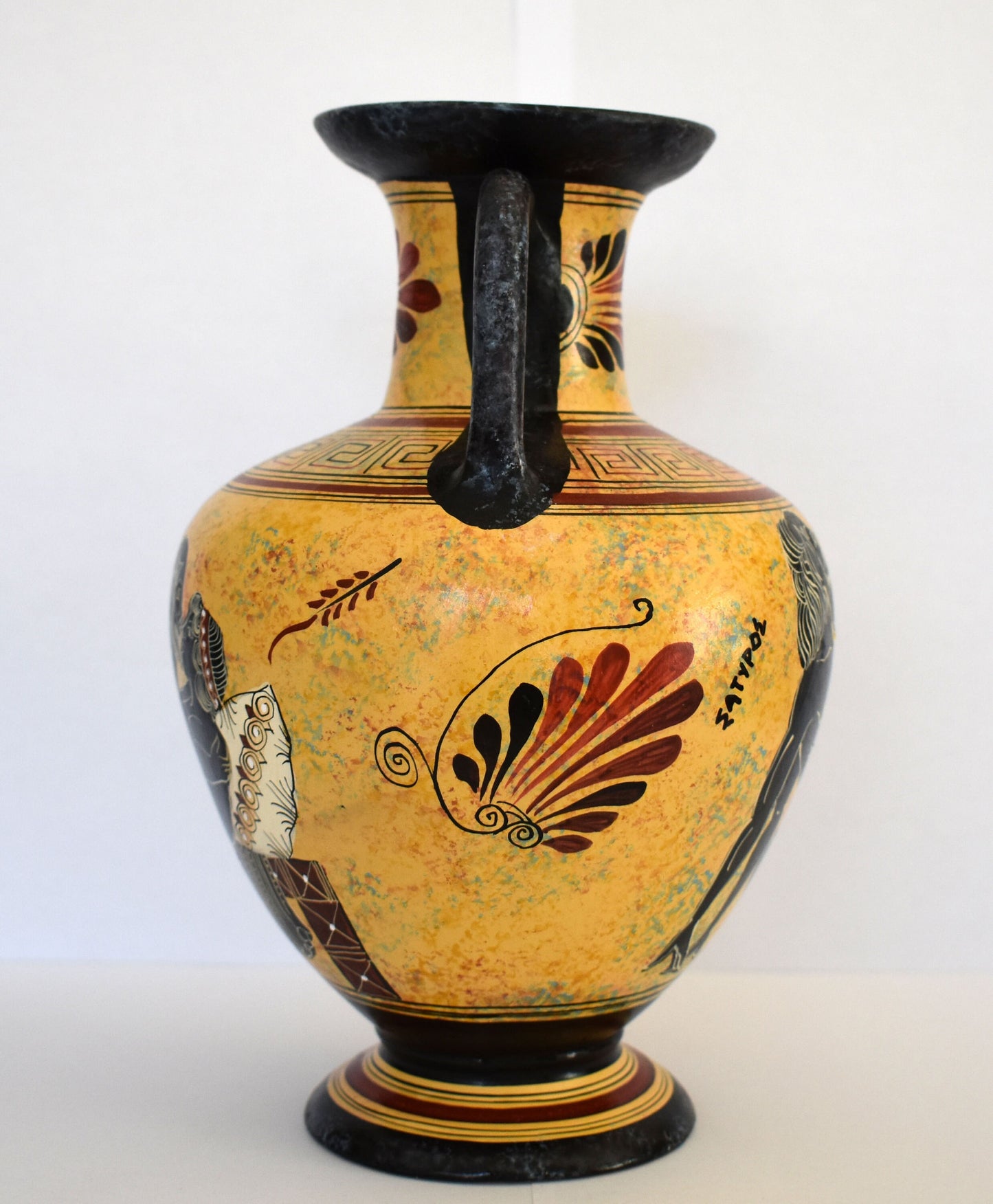Gallery Demeter
Satyr - Male Nature Spirit - Athenian Couple in Love - Sex is Never Enough - Ceramic Vase
Satyr - Male Nature Spirit - Athenian Couple in Love - Sex is Never Enough - Ceramic Vase
Regular price
€139,90 EUR
Regular price
Sale price
€139,90 EUR
Unit price
per
Tax included.
Shipping calculated at checkout.
Couldn't load pickup availability
Item Specifics
Condition: New, Handmade in Greece.
Material: Clay
Height Size: 23 cm - 9,1 inches
Width: 15 cm - 5,9 inches
Weight: 990 g
Satyr and Silenus, in Greek mythology, creatures of the wild, part man and part beast, who in Classical times were closely associated with the god Dionysus. Their Italian counterparts were the Fauns (see Faunus). Satyrs and Sileni were at first represented as uncouth men, each with a horse’s tail and ears and an erect phallus. In the Hellenistic age they were represented as men having a goat’s legs and tail. The occurrence of two different names for the creatures has been explained by two rival theories: that Silenus was the Asian Greek and Satyr the mainland name for the same mythical being; or that the Sileni were part horse and the Satyrs part goat. Neither theory, however, fits all the examples in early art and literature. From the 5th century bc the name Silenus was applied to Dionysus’ foster father, which thus aided the gradual absorption of the Satyrs and Sileni into the Dionysiac cult. In the Great Dionysia festival at Athens three tragedies were followed by a Satyr play (e.g., Euripides’ Cyclops), in which the chorus was dressed to represent Satyrs. Silenus, although bibulous like the Satyrs in the Satyr plays, also appeared in legend as a dispenser of homely wisdom..
To understand sexuality in ancient Athens it's necessary to remember that the Athenian culture had no corollary to many of the ideas at the root of modern Western attitudes towards sex. Athens had no Eve, shamed by her nakedness, no commandments carved in stone.
What they did have carved in stone were phalluses. Lots and lots of them, by some accounts. Male sexual organs were frequently included in art, literature, drama and even the streets of Athens. Stone pillars called herms, featuring a bust of the god Hermes at their top and an erect phallus at their base, were placed outside houses for good luck.
Nudity was, if not exactly commonplace, perfectly acceptable. Athletic competitions and many artistic representations of the human form were undertaken nude.
Sex was an act defined by the phallus. It was not an act done with a partner, but rather to a partner. The active party penetrated the passive; in all but the rarest case the active party was an adult male citizen. The division of rights, responsibilities and roles in sexual relationships was not simply split along gender lines, but also lines of class, and of age.









